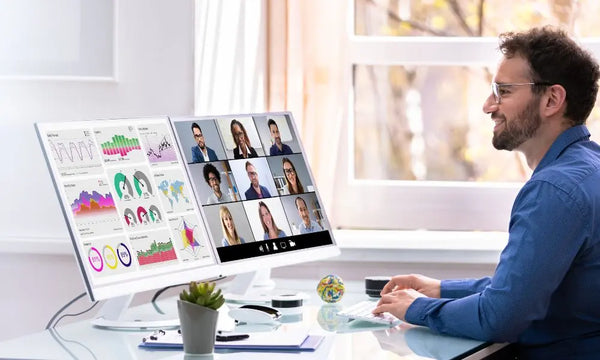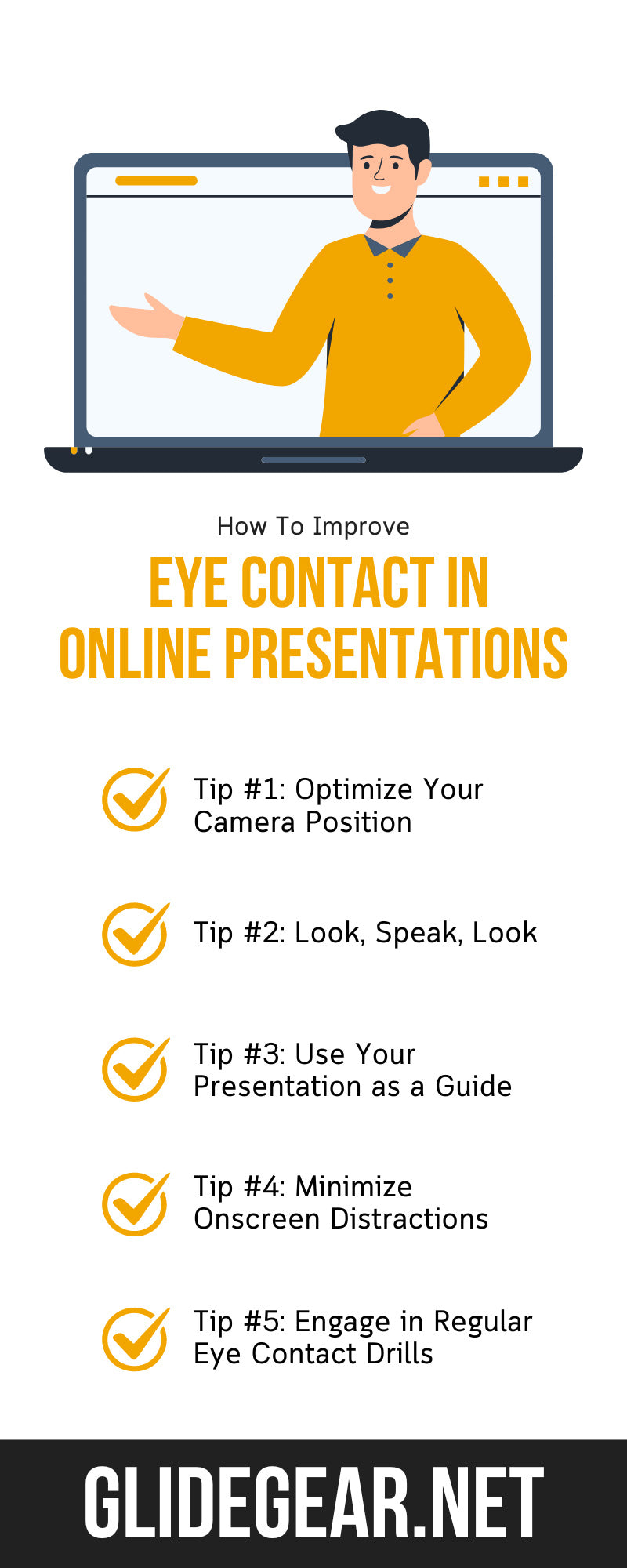
How To Improve Eye Contact in Online Presentations
Navigating the digital landscape of virtual meetings and presentations demands a unique set of skills, not least of which is the art of eye contact. Gone are the days when your physical presence in a room commanded attention; now, your ability to connect through a screen plays a pivotal role in capturing and maintaining your audience’s engagement. Improving eye contact in online presentations is not just about looking into a camera, but about forging a connection that transcends physical boundaries, making each listener feel seen, heard, and valued.
The transition from in-person to virtual interactions hasn’t lessened the need for personal touch; rather, it’s highlighted the significance of non-verbal cues in digital communication. The small lens of a webcam becomes a gateway to intimacy in a sea of pixels, transforming impersonal broadcasts into meaningful exchanges. But how does one harness this power effectively? The answer lies in understanding not just where to look, but how to convey sincerity, confidence, and attentiveness through the gaze.
Dive into the nuances of making genuine eye contact through a screen, and discover how this simple yet profound tool can transform your online presentations.
Why Is Eye Contact So Important?
Consistent, friendly eye contact is the silent language that speaks volumes, the bridge that connects speaker to audience across the digital divide. Even when mediated by screens and cameras, it remains a powerful tool for communication, imbuing virtual spaces with a sense of personal connection and engagement that’s essential for effective presentations.
In a world where screen fatigue and digital distractions are rampant, locking eyes—even virtually—with your audience signals sincerity and confidence. It tells them, “I am here with you, focused and fully present.” This non-verbal cue fosters a sense of reliability and authenticity, making your audience more receptive to your message.
Tip #1: Optimize Your Camera Position
The placement of your camera plays a pivotal role in how your eye contact is perceived by your audience. Ideally, the camera should be at eye level, mimicking the natural line of sight you would have in a face-to-face conversation. If the camera is too low or too high, it can create an unnatural angle that distracts and disengages your audience.
Use books, stands, or adjustable mounts to raise your device if necessary. Additionally, positioning the camera at a slight distance, allowing for a head-and-shoulders view, can make the interaction feel more personal and less invasive. This setup encourages you to look directly into the camera lens, creating the illusion of direct eye contact with your audience and enhancing the sense of connection and engagement.
Tip #2: Look, Speak, Look
Maintaining constant eye contact with a camera can feel unnatural and may lead to a rigid presentation style. The look-speak-look technique can counter this awkwardness.
Before you start speaking, take a moment to look into the camera and establish that initial connection. As you begin your presentation, allow your gaze to naturally move away occasionally, just as it would in a live setting. This could mean glancing at your notes on an iPad teleprompter stand, looking at a different part of your screen, or simply shifting your gaze to relieve the intensity.
Periodically return your focus to the camera, especially when you emphasize key points. This technique makes your eye contact feel more natural and dynamic, closely mirroring the ebb and flow of in-person interactions.
Tip #3: Use Your Presentation as a Guide
If you’re using slides or other visual aids, it’s easy to fall into the trap of focusing too much on these elements rather than your audience. To improve eye contact, treat your presentation as a guide rather than an anchor.
Familiarize yourself thoroughly with your material before the presentation; this allows you to speak freely without being tethered to your slides or your teleprompter. When you do refer to them, use brief glances to jog your memory, then return your focus to the camera. This not only helps maintain the illusion of eye contact but also conveys confidence in your mastery of the subject matter.
Tip #4: Minimize Onscreen Distractions
The layout of your screen can significantly impact your ability to maintain eye contact. Multiple open windows, notifications, and other onscreen distractions can draw your gaze away from the camera.
Before you start your presentation, close unnecessary applications and mute notifications. If you need to keep certain windows open, such as your presentation slides or notes, position them as close to the camera as possible. This setup minimizes the distance your eyes travel from the camera. It’ll be easier to maintain eye contact with your audience while still referring to your materials as needed.
Tip #5: Engage in Regular Eye Contact Drills
Like any skill, improving eye contact takes practice. Complete regular drills to build your comfort and proficiency.
Watch Yourself
One effective exercise is to record yourself while speaking or presenting. Focus on looking into the camera as you talk, then review the recording to assess your performance. Pay attention to how often and how naturally you maintain eye contact, and identify potential areas of improvement.
Let Others Watch You
Another drill involves practicing with a friend or colleague over a video call, asking for feedback on your eye contact and overall engagement. Over time, these practices will help you develop a more natural and confident approach to making eye contact during online presentations.
Closing Thoughts
In the digital communication landscape, improving eye contact during online presentations is not just about perfecting the technique; it’s a deeper dive into the art of connection. This journey transcends mere practice and invites us into a realm where mindfulness meets the screen, crafting authentic moments that bridge the gap between us and our audiences.
This endeavor to perfect eye contact is more than a skill—it’s a pathway to mindful communication. It encourages us to be fully present, transforming every digital interaction into an opportunity for genuine connection. As we refine this art, we nurture a more attentive, empathetic way of engaging with the world online.
Embracing this commitment signals a broader dedication to growth. In a world veering toward virtual connections, these communication skills are essential. They bolster our relationships, boost our self-assurance, and amplify our impact. As you apply these insights and embrace the practice, remember—you’re not just elevating your presentations. You’re enriching your ability to connect, inspire, and make a difference in a world that’s increasingly online.

